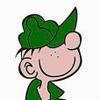More than 30 people injured by Fourth of July fireworks, KC hospitals report
Published in News & Features
KANSAS CITY, Mo. — Kansas City area hospitals continue to report fireworks-related injuries, with the weekend total reaching more than 30 as of Saturday afternoon.
The University of Kansas Hospital’s initial report on fireworks-related injuries was released Friday afternoon, and was updated Saturday. The hospital included the Burnett Burn Center and KU’s Olathe and Liberty campuses.
So far, 29 males and 8 females between the ages of two and 58 years old have been treated, officials said in a news release. Injuries have been to the face, legs, hands, thighs and chest.
Fireworks-related injuries were being reported in Kansas City earlier than you might expect this Fourth of July.
By 3 p.m. Friday, 10 males, between the ages of six and 58, had been hurt in either the hands, arm face or eye. According to the release, injuries so far have been largely caused by smoke bombs, crackling balls, bottle rockets, sparklers and mortars.
Nine people have been admitted to the hospital.
Children’s Mercy had treated 7 patients between the ages of 3-16 years old as of Friday afternoon, according to a release. Both male and female patients who had injuries to hands, face, feet, arms and legs.
Fireworks can be fun, as long as proper safety measures are taken.
Kids’ arms often aren’t long enough to hold sparklers at a safe distance, according to Children’s Mercy and the Center for Childhood Safety and Injury Prevention. The Consumer Product Safety Commission advises that children do not use fireworks, including sparklers.
Burns are the most common fireworks injury, especially to the hands and fingers. Michael Hopkins, spokesperson for the Kansas City Fire Department, recommends fireworks only be handled by responsible adults and that they follow all manufacturer instructions.
Never point fireworks at a person, pet or property and don’t set them off in your hand or use them indoors, on dry grass or near flammable materials. Sparklers, a hand-held firework often used by children, can heat up to 2,000 degrees.
Only use one firework at a time and back away immediately after lighting it. If a firework fails to ignite, don’t stand over the firework to inspect it or try to reignite it. Keep a bucket of water, hose or a fire extinguisher on hand.
Don’t ever throw fireworks away in your home trash can or inside the garage, even if you believe they are extinguished, said Hopkins. He recommends that fireworks be soaked with water for a few hours before they are disposed of.
(The Star’s Maddie Carr contributed to this report.)
©2025 The Kansas City Star. Visit kansascity.com. Distributed by Tribune Content Agency, LLC.







Comments